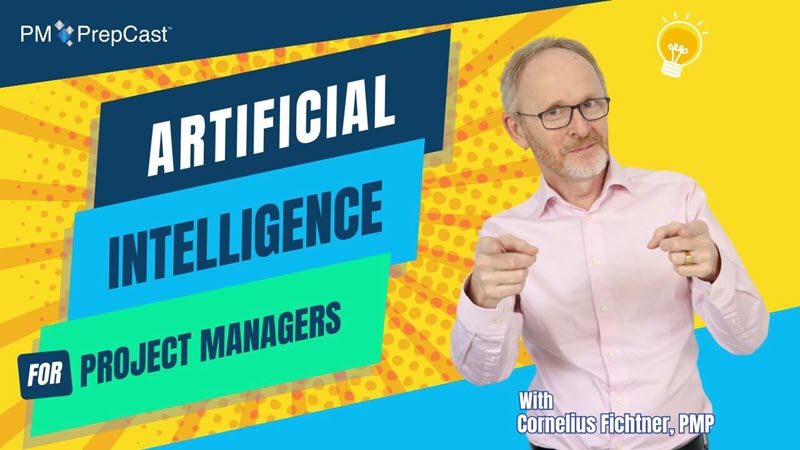Episode 315: The Top Ten Topics, Tips & Tricks for Project Scope Management (Premium)
This episode is reserved for subscribers of the Premium Podcast. Learn how to subscribe to the Premium Podcast to access this interview and transcript...
This episode is sponsored by The PM PrepCast for The PMP® Exam:

We are welcoming back Jamal Moustafaev (http://ca.linkedin.com/in/jmoustafaev/en). And once again we will be talking about his new book on the topic of Project Scope Management.
But this time it’s all practical because we are going to discuss and give you the top ten topics, tips and tricks for scope management. And so you can look forward to learning about scope control in project management, the signs that your project needs proper scope management, requirement taxonomies, types of questions to ask during requirements elicitation, requirements prioritization, writing guidelines and many more tips that you can apply to your scope management practices right away.
In my last interview with Jamal we discussed scope in project management, and we are carrying on the topic today because it is such a fundamental part of getting a project set up for success.
Let’s just hope that there is no project management scope creep during the interview!
Episode Transcript
Below are the first few pages of the transcript. The complete transcript is available to Premium subscribers only.
Podcast Introduction
Cornelius Fichtner: Hello and welcome to Episode #315. This is the Project Management Podcast™ at www.pm-podcast.com and I'm Cornelius Fichtner. Welcome back!
This is a Premium Episode. That means it's recorded and reserved for you, our Premium subscribers.
We are welcoming back Jamal Moustafaev and once again, we will be talking about his new book on the topic of project scope management. But this time, it's all practical because we are going to discuss and give you the top 10 topics and tips and tricks in regards to scope management. And so, you can look forward to learning about the signs that your project proper scope management, requirement taxonomies, types of questions to ask during requirements elicitation, requirements prioritization, writing guidelines and many more tips that you can apply to your scope management best practices right away.
So let's just hope that there is no scope creep. Enjoy the interview.
Podcast Interview
Female voice: The Project Management Podcast’s feature Interview: Today with Jamal Moustafaev, President and CEO of Thinktank Consulting, a consulting company specializing in project and portfolio management services.
Cornelius Fichtner: Hello Jamal! Welcome back.
Jamal Moustafaev: Hi, Cornelius!
Cornelius Fichtner: So right now, we want to jump into tips, tips, tips, tips, tips for project scope management all based on your book: Project Scope Management: The Practical Guide to Requirements for Engineering, Product, Construction, IT and Enterprise Projects.
First question: What are the signs that your company even needs proper project scope management?
Jamal Moustafaev: Good question! Actually every time I'm called in to a perspective client or a teacher course project scope management either onsite of the company or a public course, I like to play the, so to speak, psychological trick on people. I tell them, I'm going to read out top 10 signs that your company might be in dire need of proper project scope management. And as I read through them, you're welcome to bend your fingers on your hands if you think this is applicable to your company and at the end of this exercise, tell me how many fingers you have bent.
And here's the list: Even the high-level project goals are never clearly defined. Customers are too busy to participate in the process of requirement elicitation. It's kind of start building this and as you build it, I will hopefully show up and tell you what's right and what's wrong. You have a lot of people who are not actual customers or users but they speak and provide requirements on their behalf.
Product or service scope exists in the heads of business or technical experts but they never bothered to write it down. It's kind of like, well the developers know what needs to be written, why bother.
You look through the project scope or product scope feature by feature and you start talking to customers, you start asking them questions: Well, what's important? What's less important? The answer would be all of the features listed here are equally important and they are very important.
Once your requirement specification document, if there is one, ends up in the hands of your technical team, they come back to you saying: Hey, there is a missing information here or there is an ambiguous information in here. There are several ways for me to interpret the statement. You discover that your customers come in very frequently right at the very first meeting and they start talking to you about the design of the product rather than the functionality that they want.
Another symptom: Customers do not like to sign off on the requirements document or they reluctantly provide their sign now but they reserve the right to change their mind all the time throughout the planning and execution of your project. Your company does not even have proper requirement specification template.
And finally, project scope that you're working on constantly changes and increases but your time, resource and budget constraints stay the same. So tell me…
Cornelius Fichtner: I have ran out of fingers.
Jamal Moustafaev: Okay. So that's the answer to the question. Usually, statistically, average that I hear in my encounters consulting and training, a count of 7, 8, sometimes 6, sometimes 10. Sometimes people say, we have ran out of fingers. But it's at the high end, let's put it this way.
Cornelius Fichtner: Yeah, it's a very powerful list. You have pretty much put your finger literally. You put the finger on the main problems when it comes to scope management and scope creep just with a few simple questions here.
Jamal Moustafaev: Absolutely!
Cornelius Fichtner: Next tip in regards to project scope management, requirements taxonomies. What type of taxonomies do we have? Which ones should we be using?
Above are the first few pages of the transcript. The complete PDF transcript is available to Premium subscribers only.
- Last updated on .


